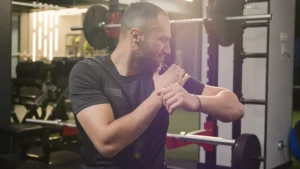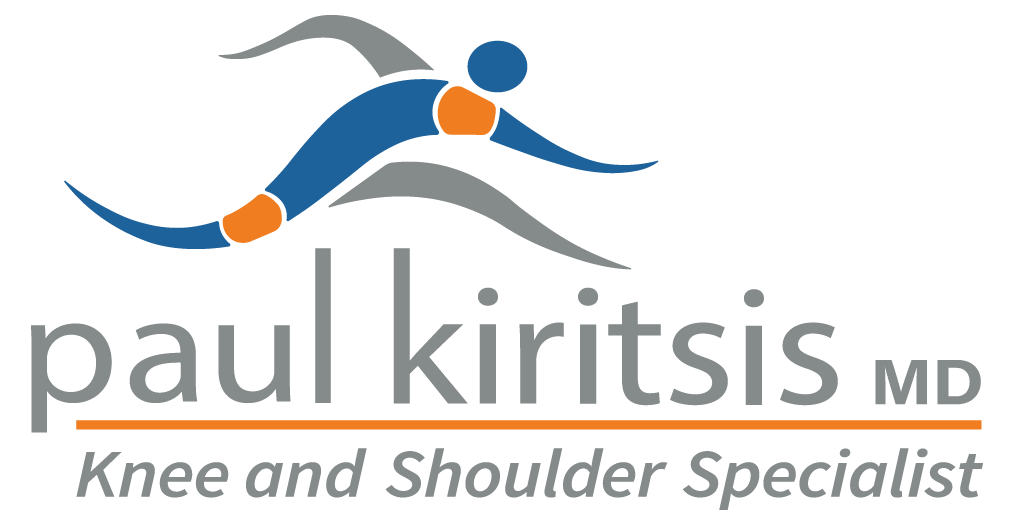After reverse shoulder replacement surgery, your rotator cuff muscles often become less active and may atrophy, while the deltoid muscle takes over as the primary driver of shoulder movement. This shift changes how your shoulder functions and raises the question of what happens to rotator cuff muscles after reverse shoulder replacement. In this post, we’ll explore these changes and what you can expect during recovery.
Key Takeaways
- Reverse shoulder replacement surgery is effective for patients with irreparable rotator cuff tears, as it shifts the burden of arm movement to the deltoid muscle.
- Post-surgery, rotator cuff muscles may thin and weaken (atrophy), making personalized physical therapy important for recovery and restoring strength.
- While the procedure significantly reduces pain and improves quality of life, some patients may notice limitations in internal rotation and overhead strength.
Understanding Reverse Shoulder Replacement Surgery
The primary goal of reverse shoulder replacement surgery is to restore shoulder function in patients with severe rotator cuff damage. Unlike traditional shoulder replacement, this surgery can be well suited for patients with irreparable rotator cuff tears, offering a solution when other treatments have failed. It can also effectively address conditions like rotator cuff tear arthropathy, where a shoulder without an intact rotator cuff becomes arthritic.

During the procedure, the orthopedic surgeon replaces the damaged joint parts with implants that reverse the usual ball-and-socket configuration of the shoulder.
Post-surgery, patients often report improved shoulder function and pain reduction in daily activities.
Function of Rotator Cuff Muscles Pre-Surgery
To fully understand the effects of reverse shoulder replacement, we must first examine the role of rotator cuff muscles. The rotator cuff consists of muscles and tendons that stabilize the humeral head within the glenoid cavity, enabling smooth, controlled movement. The rotator cuff works in harmony with the deltoid muscle to ensure coordinated and stable shoulder movements. This system provides both mobility and stability, allowing for a wide range of arm movements we use while performing various activities, such as reaching and lifting.
When the rotator cuff is injured and cannot function as expected, the overall function and stability of the shoulder joint may be significantly impacted.
Impact of Reverse Shoulder Replacement on Rotator Cuff Muscles
Reverse shoulder replacement surgery dramatically changes the dynamics of the shoulder joint. One of the most significant changes is the role of the deltoid muscle in compensating for the impaired rotator cuff muscles. Inverting the ball-and-socket structure enables the deltoid muscle to stabilize and lift the arm, rather than relying heavily on the rotator cuff.
However, this shift in muscle dynamics may lead to reduced strength in internal rotation and overhead lifting post-surgery. While the deltoid muscle takes on a more prominent role, the rotator cuff muscles undergo changes, including atrophy and altered biomechanics, affecting other muscles. In the following sections, let’s explore these changes in greater detail.
Muscle Compensation and Adaptation
Following reverse shoulder replacement, the deltoid muscle becomes the primary driver of arm elevation and joint stability. It works in conjunction with the remaining rotator cuff muscles to facilitate smooth arm movements while minimizing abnormal joint motion. The surgery allows the deltoid muscle to assume many roles previously handled by the rotator cuff by inverting the natural ball-and-socket anatomy.
As the deltoid muscle adapts to its expanded role, it typically increases in size (hypertrophy) to meet increased functional demands. This adaptive change allows patients to regain a significant range of motion and functionality, even in the absence of a fully functioning rotator cuff.
Atrophy and Rehabilitation
The rotator cuff muscles can experience shrinkage (atrophy) post-surgery due to reduced activation and muscle adaptation.
To address rotator cuff atrophy, tailored physical therapy is generally recommended for individuals recovering from reverse shoulder replacement. Rehabilitation programs focus on improving flexibility and strengthening the remaining muscles to compensate for the loss of rotator cuff function. Through targeted exercises and therapies, patients can achieve improved function and a better quality of life.
Role of Physical Therapy Post-Surgery
Physical therapy is a key component of recovery by optimizing muscle function, strengthening the shoulder, and improving flexibility. Personalized rehabilitation plans are essential for achieving optimal outcomes, focusing on restoring strength and enhancing the range of motion.
Orthopedic surgeons typically recommend starting gentle range-of-motion exercises shortly after surgery to aid recovery. These exercises help maintain joint mobility and prevent stiffness. Patients are usually encouraged to start daily activities and physical therapy exercises early on, as neglecting shoulder exercise can lead to further tendon damage and hinder recovery.
By the three-month milestone, most patients report significant reductions in pain and improved function, flexibility, and range of movement. The benefits of dedicated physical therapy extend well beyond pain relief, ultimately empowering patients to reclaim active, fulfilling lifestyles through restored shoulder functionality.
Benefits of Reverse Shoulder Replacement
Reverse shoulder replacement can deliver transformative outcomes for patients grappling with irreparable rotator cuff tears and other rotator cuff injuries that severely limit shoulder function. It is particularly effective for patients with rotator cuff tear arthropathy.
In addition to pain relief, the surgery can restore arm strength and improve overall joint stability, offering patients a renewed quality of life and greater range of motion than was previously possible.
The Importance of Choosing an Experienced Shoulder Surgeon
When considering reverse shoulder replacement, selecting a highly experienced orthopedic surgeon that specializes in shoulders is key to achieving the best possible outcome. Research consistently shows that surgeons who perform a high volume of shoulder procedures tend to have lower complication rates and deliver better results. Many insurance carriers recognize these surgeons as preferred providers, a designation that reflects both clinical excellence and a strong track record of patient safety. This level of trust underscores the value of choosing a surgeon with proven expertise and a commitment to consistently delivering high-quality, patient-centered care.
Orthopedic surgeons with additional training in sports medicine offer particularly valuable insights for shoulder replacement patients, especially when it comes to rehabilitation and performance. Experience treating elite and professional athletes fosters a deep understanding of the shoulder’s complex biomechanics and the demands placed on it during high-level activity. This expertise translates into a more tailored and dynamic recovery process, one that not only emphasizes surgical healing but also focuses on regaining strength, mobility, and functional performance.
Considering shoulder replacement surgery? Your shoulder is unique, and your treatment plan should be, too. Schedule a consultation to understand how Precision Shoulder Replacement can restore your shoulder’s native anatomy and ensure optimal results.
Preparing for Surgery
Preparing for reverse shoulder replacement surgery involves several important steps. Ahead of the surgery, a physical examination by your regular doctor will likely be recommended. In addition, patients should inform their healthcare providers about all medications they are taking, including over-the-counter drugs and supplements. Certain medications, particularly blood thinners, may need to be temporarily stopped before the surgery to reduce the risk of complications. Imaging tests like X-rays and CT scans are often required to assess the shoulder’s condition before the procedure.
Ahead of the operation, patients may also be encouraged to meet with the physical therapist that will be managing their rehabilitation. This allows the physical therapist to record a baseline of information and begin teaching some key exercises for optimal recovery.
Home adjustments can facilitate a smoother recovery after the surgery. Placing frequently used items within easy reach and arranging for assistance with daily tasks such as dressing and bathing can be helpful. Choosing loose fitting, button-front clothing simplifies the process of getting dressed and undressed post-surgery.
Patients are generally advised not to eat or drink anything after midnight before the day of surgery to ensure a safe operation. Close adherence to preoperative instructions is important for patient safety.
Recovery Process
The initial rehabilitation timeline typically ranges from 3 to 6 months, with full recovery sometimes taking up to 9 months. Initial physical therapy sessions, which usually start the day after surgery, prioritize pain management, swelling reduction, and regaining range of motion. Passive range of motion exercises are beneficial during the first month to prevent stiffness and maintain joint mobility.
Patients may be encouraged to use a sling for the first four weeks post-surgery to support the shoulder joint. Light activities such as eating or dressing can typically be resumed within about a week after surgery. Active strengthening exercises begin around 6 to 12 weeks post-surgery to enhance shoulder function and restore mobility. Advanced rehabilitation aims to enhance deltoid function and restore shoulder stability through targeted strengthening exercises.
Long-term recovery involves maintaining a prescribed home exercise program and attending regular follow-up appointments to preserve shoulder health after formal therapy concludes.
Summary
In summary, reverse shoulder replacement surgery offers a transformative solution for individuals with severe rotator cuff injuries, providing significant pain relief and improved shoulder function. The procedure compensates for impaired rotator cuff muscles by shifting the movement burden to the deltoid muscle, allowing patients to regain a substantial range of motion and functionality.
While the surgery has some limitations and risks, the benefits often outweigh the drawbacks, leading to an enhanced quality of life for many patients. By understanding the impact of the surgery on rotator cuff muscles, the role of physical therapy, and the importance of preparation and recovery, patients can navigate their journey with confidence and optimism.
Frequently Asked Questions
What is the main purpose of reverse shoulder replacement surgery?
The main purpose of reverse shoulder replacement surgery is to improve shoulder function in patients with severe rotator cuff injuries and tears. This procedure allows for better arm movement and alleviates pain.
How do rotator cuff muscles function before surgery?
Rotator cuff muscles stabilize the humeral head in the glenoid cavity, enabling smooth joint movement and precise control of arm trajectories during activities such as reaching and lifting.
What are the benefits and limitations of reverse shoulder replacement?
Patients typically experience dramatic pain relief and regained mobility, especially valuable for those with irreparable rotator cuff tears. The trade-off involves potential constraints in the range of motion and difficulties in performing activities that require throwing or heavy lifting.
What are common risks and complications of reverse shoulder replacement surgery?
Complications may occur, as with all major surgical procedures. Some of the most common complications following reverse shoulder replacement surgery are anesthesia, infection, loosening, dislocation, and nerve damage. It’s important to discuss these risks with your surgeon to ensure informed decision-making.
How long does the recovery process take after reverse shoulder replacement surgery?
The initial rehabilitation timeline for most patients typically ranges from 3 to 6 months, with full recovery sometimes taking up to 9 months. Physical therapy generally begins the day after surgery.





